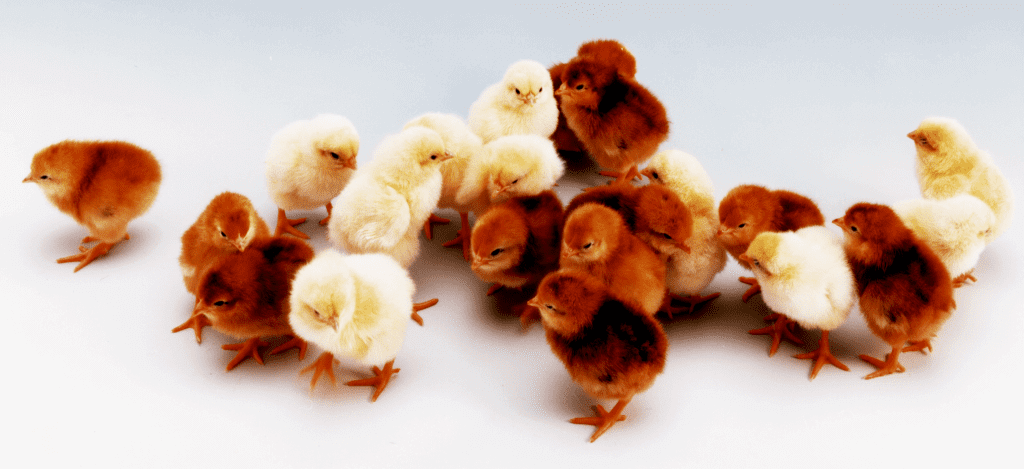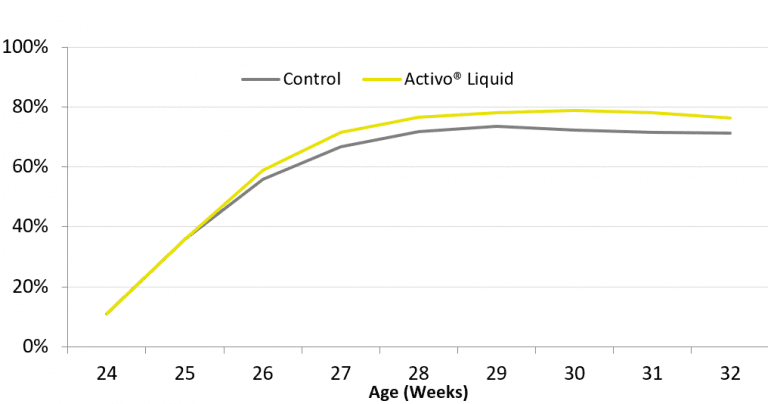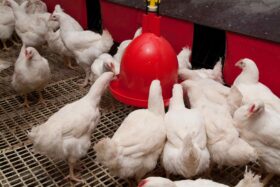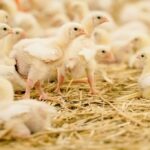
Strong demand by consumers; restaurant chains and wholesalers for antibiotic-free (ABF) meat; the threat of antimicrobial resistance; and stringent regulations on the use of antibiotics – there are many good reasons for poultry producers to strive for antibiotic-free production systems. Crucially, to successfully produce poultry meat without antibiotics requires a paradigm shift that starts right at the parent stock level, with the antibiotic-free production of hatching eggs.
Broiler breeders’ gut health is linked to progeny’s performance
Broiler breeders’ performance is measured in terms of how many saleable day old chicks (DOCs) per hen they produce. However, within a sustainable ABF production system (also known as No Antibiotics Ever or NAE), this parameter is not seen in isolation. Breeder hens’ nutritional and health status not only affect the number of DOCs they can produce, but also the transfer of nutrients, antibodies, microbiota and even contaminants, e.g. mycotoxins, to the egg – and therefore, their progeny’s long-term health and performance.
This starts with egg formation, which requires several metabolic processes in the hen to function perfectly. If the hen’s intestinal integrity is compromised, for example due to mycotoxins, she will absorb fewer nutrients, which in turn affects egg formation. Mycotoxicosis has particularly insidious effects for egg formation as it can damage the liver whose biosynthetic activities strongly impact on the egg’s internal (yolk) and external (eggshell) quality.
Chick embryos depend on the maternal antibodies and nutrients deposited in the yolk, including vitamin D3, carotenoids, and fatty acids, to develop normally. Eggshell quality, among other things, affects the embryo’s access to oxygen, which is especially important when it develops body tissues.
Hens’ ability to form healthy eggs depends on their diet and health. Research indicates that, via the impact on egg formation, broiler breeders’ feeding program quantifiably influences their progeny’s immune system and intestinal health. There is indeed a direct relationship between parent and offspring’s gut health because the chick’s microbiome is in part also inherited from the hen. The impact on DOC quality is thus one of many dimensions to consider when calibrating one’s broiler breeders feeding approach.
The challenge of feeding an ABF broiler breeder
Just as their offspring, breeder hens are genetically predisposed for rapid growth and muscle development. From rearing right through to the laying period, poultry nutritionists need to carefully balance their diets and moderate weight gain in order for hens to reach their reproductive potential.
Different stages of a breeder’s life cycle come with different objectives – for example, good flock uniformity in the rearing period versus egg size and hatchability in the laying phase – and thus different requirements in terms of calories, amino acids, vitamins, and minerals. What remains constant is that the actual nutrient intake depends on intestinal health, determining both the breeders’ performance and, via the impact on egg characteristics, its progeny’s performance.
The feeding regimes adopted to avoid hens becoming overweight can have a negative effect on their gut flora. Without antibiotics as a tool to maintain or recover optimal gut function, even mild intestinal disorders can quickly become chronical impairments that negatively impact breeders’ productivity. In ABF production systems, intestinal health therefore needs to be a central focus for the feeding strategy.
Can phytomolecules improve broiler breeders’ performance?
Among the plethora of feed additives, phytomolecules, or secondary plant compounds, stand out as a class of active ingredients that may help to improve gut health and thereby reduce the use of antibiotics. Synthesized by plants as a defense mechanism against pathogens, phytomolecules combine digestive, antimicrobial and antioxidant properties.
Some studies have shown that phytomolecules-based products can increase broilers’ body weight gain and improve laying hens’ laying rate, egg mass and egg weight. Both broilers and laying hens responded to the inclusion of phytomolecules in their diet with inclusion rate-dependent improvements in feed conversion. To evaluate if phytomolecules could similarly improve broiler breeders’ performance, two trials were conducted.
Study I: Effect of phytomolecules on laying performance during peak production
The first study was set up on a farm in Thailand. In total, 40000 Cobb broiler breeders (85% female, 15% male) were divided into two groups with 8500 hens (one house) in the control and 25500 (three houses) in the trial group. Both groups were fed standard feed. The trial group additionally received a phytomolecules-based liquid complementary feed (Activo® Liquid, EW Nutrition GmbH) via the waterline from week 24 to week 32 at a rate of 200ml/1000L during 5 days per week.
Activo® Liquid was found to have a positive influence on laying performance (Figure 1). The average laying rate increased by 7.2% during the trial period, resulting in almost 3 additional hatching eggs per hen housed. A further indication of the beneficial influence that this particular combination of phytomolecules had on gut health was a 0.2% lower mortality.

Figure 1: Laying rate (%) of breeder hens during first 9 weeks of production
Study II: Effect of phytomolecules on laying performance after peak production
For a second study, conducted in the Czech Republic, 800 female and 80 male Hubbard breeders (JA57 and M77, respectively) were divided into 2 groups with 5 replicate pens and 80 female and 8 male breeders per pen. The experiment started after the peak-production period, at 34 weeks of age and ended at 62 weeks of age. All animals received a standard mash diet. For one group a phytogenic premix (Activo®, EW Nutrition GmbH) was added to the diet at a rate of 100g/MT.
The results indicate that Activo® helped maintain the breeder hens’ egg laying performance close to the breed’s genetic potential (Figure 2). In the course of the experiment, Activo® supplemented birds produced 3.6 more eggs than control birds, while consuming a similar amount of feed. As a result, feed consumption per egg produced was lower for birds receiving phytomolecules than for the control birds (169.9 versus 173.6g/d, respectively).
As hatchability was not influenced by the dietary treatment in this study (P>0.5), the 3.6 extra eggs resulted in 2.9 extra day old chicks per hen produced, during the post-peak period alone.
The microencapsulated, selected phytomolecules contained in Activo® are likely to have improved gut health and feed digestibility, and thereby enhanced the animals’ feed efficiency.
Figure 2: Laying rate (%) of breeder hens week 35 till 62
Chicken or egg? Antibiotic-free poultry production looks at the bigger picture
To successfully produce antibiotic-free poultry meat requires a systematic re-think of each component of the production process. Broiler breeders’ lay the foundation for their progeny’s health and performance via the egg. Breeder hens need to be in optimal health to consistently deliver optimal eggs. Without recourse to antibiotics for maintaining or recovering intestinal functionality, an effective ABF production needs to make gut health central to its feeding approach.
The trials reviewed demonstrate that selected phytomolecules quantifiably boost breeders’ laying performance, increasing the number of hatching eggs and DOCs, while reducing mortality and feed consumption per egg produced. As part of an intelligent antibiotic reduction strategy, the right phytogenic products can be potent tools to help poultry producers achieve their NAE objectives.
by S. Regragui Mazili, T. van Gerwe and M. Caballero
References
Calini, F., and F. Sirri. “Breeder Nutrition and Offspring Performance.” Revista Brasileira De Ciência Avícola 9, no. 2 (2007): 77-83. doi:10.1590/s1516-635×2007000200001.

















